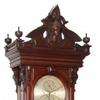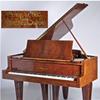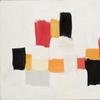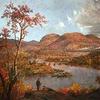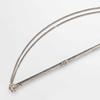The Fantastic Visions of British Illustrator Heath Robinson at Delaware Art Museum
- WILMINGTON, Delaware
- /
- November 01, 2016
W. Heath Robinson (1872-1944) was a well-known British illustrator whose life and work straddled the Pre-Raphaelite movement and the golden age of early 20th-century Illustration. Although Robinson ranked with the likes of Arthur Rackham, Edmund Dulac, and Aubrey Beardsley, his humorous, quirky, and gently satiric work is largely unknown outside the United Kingdom today. The Delaware Art Museum seeks to introduce this important turn-of-the-century illustrator to an American audience with the artist’s first retrospective exhibition: Wonder and Whimsy: The Illustrations of W. Heath Robinson, on view March 4 – May 21, 2017.
Robinson trained at the Royal Academy Schools in London and followed his two older brothers into the illustration profession. By the late 1890s he was illustrating books by authors such as Shakespeare and Hans Christian Andersen. In 1902, Heath Robinson wrote and illustrated his first children’s story, The Adventures of Uncle Lubin. The plot follows the eccentric title character as he attempts to rescue his nephew from the wicked bag bird. Robinson is also known for morale-boosting cartoons produced during both world wars. Throughout his career he also created humorous illustrations for magazines.
His well-known drawings of intricate contraptions that “solve” everyday problems earned him the nickname, the Gadget King, and the expression “Heath Robinson contraptions” is as common in his native Britain as Rube Goldberg’s is in the United States. Such contraptions and other elements of his style may have influenced the code-breakers in World War II and inspired the productions of Monty Python and Wallace and Gromit’s Nick Park.
“We are thrilled to reintroduce his work to an American audience,” explains Delaware Art Museum’s Chief Curator Margaretta Frederick. “This exhibition will explore the connections of Heath Robinson’s work to our Pre-Raphaelite and Illustration collections, as well as his influence on others working during the period.”
His career spanned significant developments in print technology, changes in art world aesthetics, and notable world events. The introduction of process engraving and advances in color reproduction greatly impacted the method of image preparation. Heath Robinson’s approach was ideally suited to the requirements of these new print processes.
This comprehensive exhibition of 68 watercolor illustrations, designs, drawings, and books showcases his style and ability to evoke the subtlest of emotions. His work harkens back to the innovations of the Pre-Raphaelites while acknowledging the Art Nouveau creations of Aubrey Beardsley and others. The exhibition will be arranged in sections, including “gift books,” a new concept in the design of deluxe editions; children’s book illustration; magazine work; and humorous images. A narrative audio guide will be available, along with an interactive reading nook for children and families.
“His illustrations mine dramatic expanses of negative space, heightened by stark contrasts of black and white, theatrical elements and extreme view points. Some of his works feature lighthearted and imaginative characters, while others show his interest in science and the machine. These visual elements pull the reader in and show a new perspective to storytelling,” says Frederick.
Works featured in this exhibition come from the collection of The William Heath Robinson Trust. For more information, visit http://www.heathrobinson.org/.


